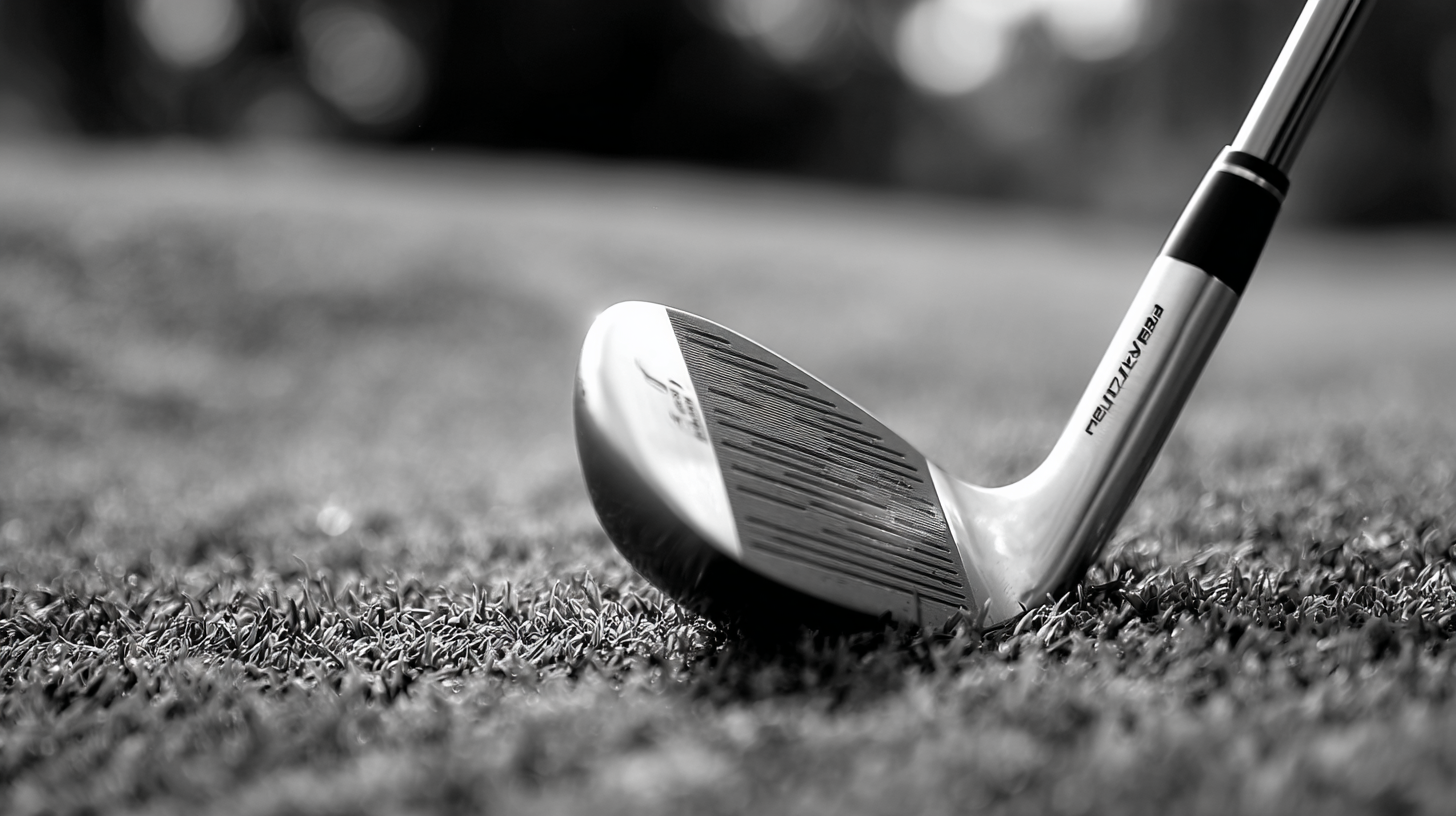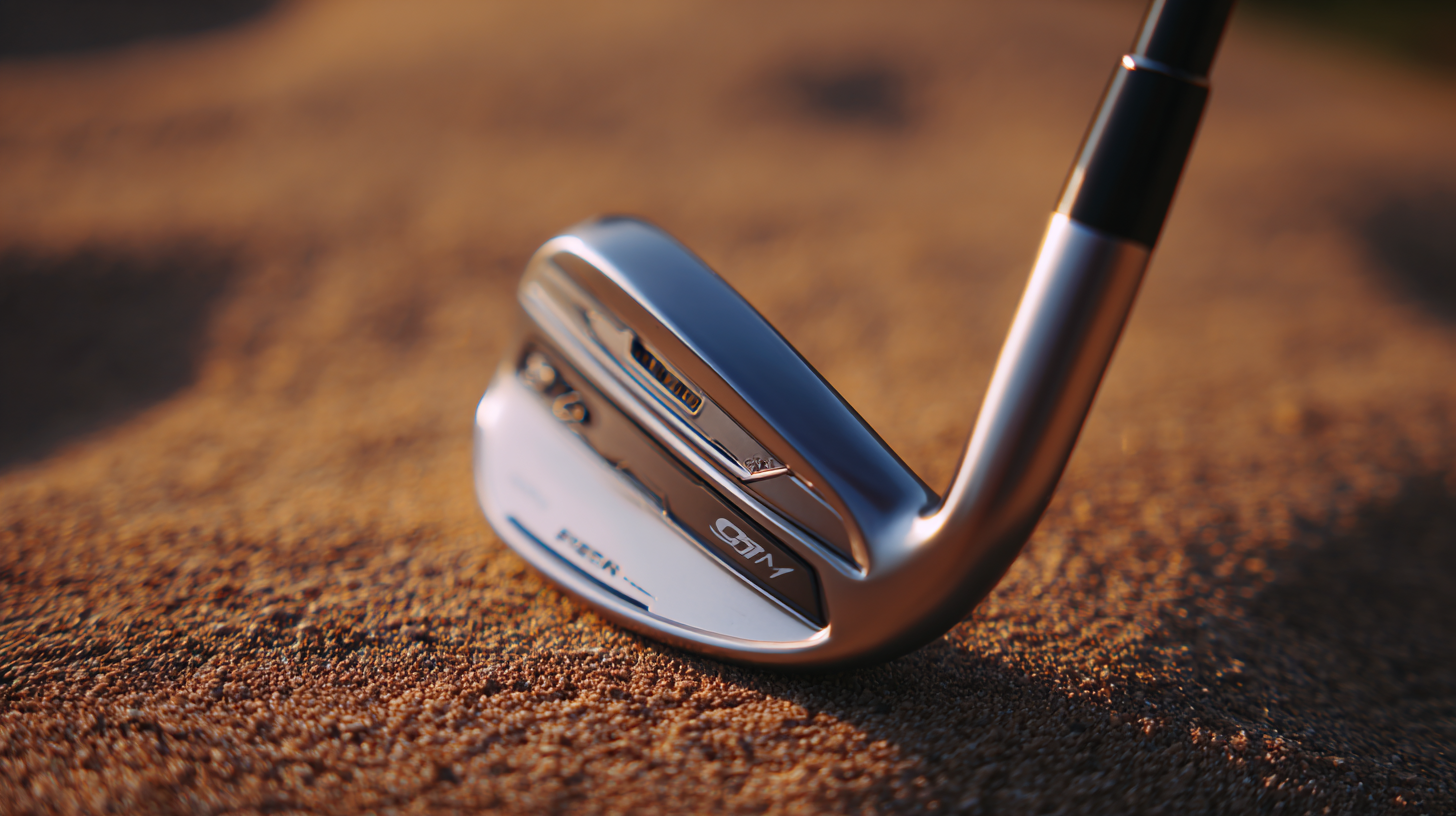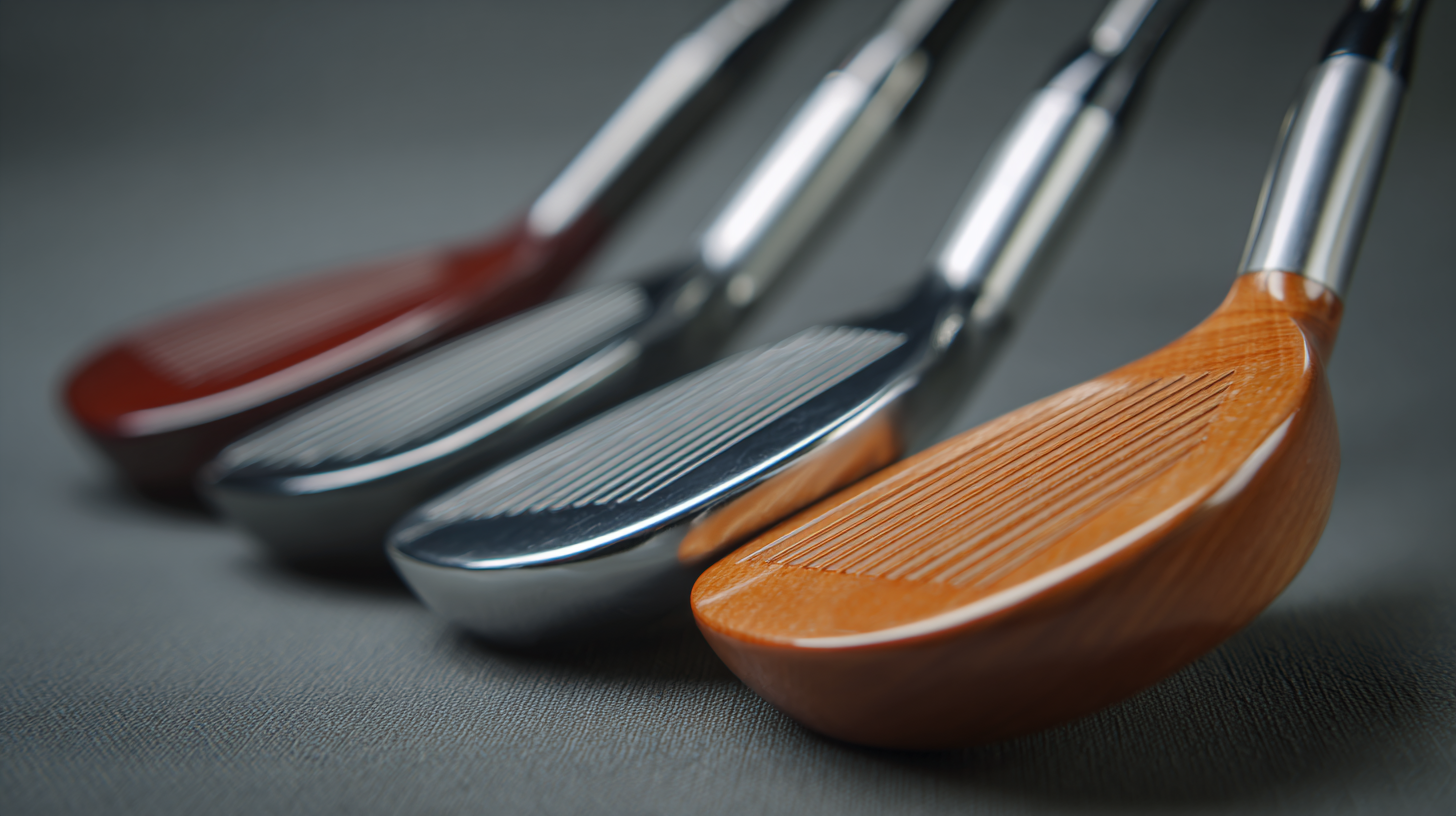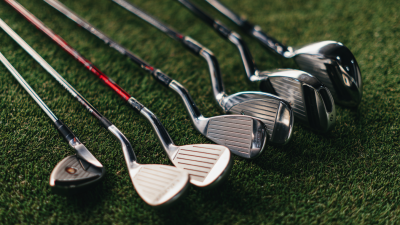Mastering Your Short Game with the Best Golf Wedges for Every Skill Level
When it comes to improving your golf game, mastering the short game is essential, and selecting the right golf wedges can make all the difference, regardless of your skill level. According to recent studies, nearly 60% of strokes taken by an average golfer occur within 100 yards of the green, highlighting the critical role that short game proficiency plays in lowering scores. In this context, golf wedges, with their specialized designs and varying lofts, enable players to execute finesse shots that can significantly impact overall performance.

Choosing the Right Wedge: A Guide for Beginners to Advanced Players
Choosing the right wedge is crucial for golfers of all skill levels, as it can significantly impact short game performance. For beginners, it's recommended to start with a versatile pitching wedge and a sand wedge. These clubs offer a good balance of forgiveness and playability, making it easier to learn essential techniques. A pitching wedge assists in a variety of approach shots, while a sand wedge helps to navigate bunkers and tricky lies around the green.
As players advance, they may benefit from adding specialty wedges to their bag, such as a gap wedge or a lob wedge. The gap wedge fills the distance gap between the pitching and sand wedges, providing more options for different situations. Advanced players often prefer custom options with varying lofts and grinds to suit their specific play style and course conditions. Ultimately, understanding the characteristics of different wedges and how they can enhance your short game is vital for golfers aiming to lower their scores and improve their overall game.

Essential Features to Look for in Golf Wedges: What Matters Most
When selecting the best golf wedges to enhance your short game, it's crucial to consider key features that directly impact performance. One of the most important aspects is the loft of the wedge. Different lofts—ranging from 46 to 64 degrees—allow for varied shot trajectories and distances, enabling players to tackle diverse course conditions and pin placements effectively. Beginners may find wedges with higher lofts more forgiving, while more experienced players might prefer a broader selection to achieve greater precision.
Another essential feature to examine is the bounce of the wedge, which refers to the angle between the leading edge and the lowest point of the sole. This characteristic influences how the wedge interacts with the turf, making it vital for managing tricky lies. A higher bounce is beneficial for softer ground, while a lower bounce performs better on firmer surfaces. Additionally, the grind of the wedge—how the sole is shaped—can significantly affect how the club performs in various situations, particularly around the greens. Combining the right loft, bounce, and grind tailored to your skill level will ultimately help you master your short game and lower your scores.
Top 5 Wedge Types for Every Skill Level: Understanding the Differences
When mastering your short game, understanding the different types of wedges available can significantly elevate your skills, regardless of your skill level. The top five wedge types are pitching wedges, gap wedges, sand wedges, lob wedges, and specialty wedges. Each serves a unique purpose: pitching wedges provide a solid approach shot option, gap wedges fill the distance gap between pitching and sand wedges, while sand wedges are designed for bunker play. Lob wedges offer high loft, ideal for delicate shots around the green, and specialty wedges cater to specific needs, such as unique lies or tricky situations.
Tips: When selecting a wedge, consider the bounce and grind suited for your swing style and the courses you play on. Beginners should focus on a pitching wedge and a sand wedge, allowing for versatility in different situations. As your skills progress, experimenting with specialty wedges can provide advanced players with additional options to tackle various lies and conditions on the course.
Choosing the right wedge isn't just about brand; it's about finding the right fit for your game. Ensure that the shaft length, material, and weight align with your playing style to enhance your performance. Whether you are just starting or looking to refine your short game, the right wedges can make all the difference in lowering your scores and boosting your confidence on the course.

Mastering Short Game Techniques: How to Use Wedges Effectively
When it comes to mastering your short game, understanding the effective use of golf wedges is crucial. The short game, often played within 100 yards of the green, encompasses pitches, chips, and delicate putts. Golf wedges, including lob, sand, and pitching wedges, are designed to execute these techniques with precision. Each type of wedge serves a unique purpose; for instance, a lob wedge is ideal for clearing obstacles and achieving a high trajectory, while a sand wedge is perfect for bunker shots and delicate greenside plays.
To use wedges effectively, players should focus on their grip, stance, and swing tempo. A relaxed grip can improve feel and control, allowing for more finesse in delicate shots. Proper stance, which includes positioning the ball slightly back in the stance for a descending strike, can enhance accuracy and distance control. Additionally, developing a consistent swing tempo is essential—too fast a swing can lead to overshooting or mishitting the ball, while a smooth, controlled swing can greatly improve short game performance. By honing these techniques and practicing regularly, golfers of all skill levels can elevate their short game and enhance their overall performance on the course.
Maintenance Tips: Keeping Your Golf Wedges in Top Condition for Longevity
Proper maintenance of your golf wedges is essential for achieving consistent performance on the course. Regularly cleaning your wedges after each round will help prevent dirt and debris from building up, which can affect ball control and spin. Use a soft-bristle brush and warm soapy water to remove grime, especially from the grooves, as this will enhance grip and accuracy on delicate shots.
Another critical aspect of maintaining your golf wedges is to inspect them frequently for signs of wear and tear. Pay close attention to the grooves; if they appear worn down or rounded, it may be time to replace the wedge. Rotating your set of wedges can also help prolong their lifespan, as using the same club excessively can lead to quicker deterioration. By keeping your wedges in optimal condition through regular cleaning and careful usage, you ensure they will continue to perform at their best.
Lastly, consider the way you store your wedges. Avoid leaving them in damp areas, which can lead to rust and corrosion. Instead, choose a dry, temperature-controlled environment. Additionally, using headcovers can protect your wedges from dings and scratches during transport. By following these maintenance tips, you'll be able to maximize the longevity and performance of your essential golf tools.
Mastering Your Short Game with the Best Golf Wedges for Every Skill Level - Maintenance Tips: Keeping Your Golf Wedges in Top Condition for Longevity
| Wedge Type | Loft (Degrees) | Best For | Maintenance Tips |
|---|---|---|---|
| Pitching Wedge | 44-48 | Approach Shots | Clean after use, check for nicks, store in a dry place |
| Sand Wedge | 54-58 | Bunker Shots | Avoid hitting rocks, clean grooves regularly |
| Lob Wedge | 58-64 | High Flop Shots | Inspect for wear, keep it dry to prevent rust |
| Gap Wedge | 50-54 | Distance Control | Regularly check grip condition, clean dirt off |

